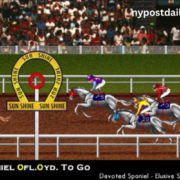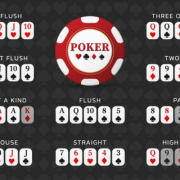In the ever-evolving landscape of digital marketing, Pay-Per-Click (PPC) advertising stands out as a highly effective strategy for driving traffic, generating leads, and ultimately, enhancing return on investment (ROI). For business owners, marketing professionals, and AI experts alike, leveraging PPC can be a game-changer. This comprehensive guide delves deep into the implications of PPC advertising on ROI, providing actionable insights and strategies to maximize your efforts.
Understanding PPC Advertising
Before diving into the strategies, it’s essential to grasp what PPC advertising entails. PPC is a model of online marketing where advertisers pay a fee each time their ad is clicked. Essentially, it’s a way of buying visits to your site rather than attempting to “earn” those visits organically.
The Basics of PPC
PPC advertising typically involves bidding on keywords. When users enter these keywords into search engines like Google or Bing, your ad may appear in the search results. If they click on your ad, you pay the agreed-upon fee. The primary goal is to drive targeted traffic to your website and convert those visitors into customers.
Types of PPC Ads
There are various types of PPC ads, including:
- Search Ads: These appear at the top or bottom of search engine results pages when users search for specific keywords.
- Display Ads: These are banner ads that appear on websites within the Google Display Network.
- Social Media Ads: Platforms like Facebook, Instagram, and LinkedIn offer PPC advertising options.
- Remarketing Ads: These target users who have previously visited your website but didn’t convert.
Example:
Imagine you own an online shoe store. By bidding on keywords such as “buy running shoes,” your ad appears when users search for these terms. If a user clicks on your ad and makes a purchase, the cost of the click is justified by the revenue from the sale.
The Impact of PPC Advertising on ROI
One of the most significant advantages of PPC advertising is its potential to deliver a high ROI. However, achieving this requires a strategic approach. Here, we explore the critical factors influencing PPC performance and how to optimize them for maximum ROI.
1. Keyword Research and Selection
Selecting the right keywords is the foundation of a successful PPC campaign. Conduct thorough keyword research to identify terms your target audience is searching for. Tools like Google Keyword Planner, SEMrush, and Ahrefs can help you uncover high-performing keywords.
Steps to Execute:
- Brainstorm Potential Keywords: Start by listing relevant keywords related to your business.
- Use Keyword Research Tools: Utilize tools to find search volume, competition, and cost-per-click (CPC) data.
- Analyze Competitors: Identify which keywords your competitors are bidding on.
- Select Target Keywords: Choose a mix of high and low competition keywords to balance cost and visibility.
2. Crafting Compelling Ad Copy
Your ad copy plays a crucial role in attracting clicks. It should be engaging, relevant, and include a clear call-to-action (CTA). Test different versions of your ad copy to see which performs best.
Steps to Execute:
- Highlight Unique Selling Points (USPs): Focus on what sets your business apart.
- Incorporate Keywords: Ensure your primary keywords are included in the ad copy.
- Create a Strong CTA: Encourage users to take action, such as “Shop Now” or “Learn More.”
- A/B Testing: Run multiple versions of your ad to determine which generates the highest click-through rate (CTR).
Example:
For the online shoe store, an effective ad copy might be: “Discover the Ultimate Comfort! Buy Running Shoes at 20% Off. Shop Now!”
3. Landing Page Optimization
Driving traffic to your website is only half the battle. Your landing page must be optimized to convert visitors into customers. Ensure it is visually appealing, loads quickly, and provides a seamless user experience.
Steps to Execute:
- Align with Ad Copy: Ensure the landing page content matches the ad’s promise.
- Simplify Navigation: Make it easy for users to find what they’re looking for.
- Optimize for Speed: Use tools like Google PageSpeed Insights to improve load times.
- Include Clear CTAs: Guide users towards the desired action with prominent CTAs.
Example:
For the running shoes ad, the landing page should feature the discounted products prominently, with clear CTAs like “Add to Cart” or “Buy Now.”
4. Budget Management
Effective budget management is crucial for maximizing ROI. Allocate your budget based on the performance of different keywords and ad groups. Regularly review your spending and adjust as needed.
Steps to Execute:
- Set a Daily Budget: Determine how much you’re willing to spend each day.
- Monitor Performance: Use platforms like Google Ads to track spending and ROI.
- Adjust Bids: Increase bids on high-performing keywords and reduce bids on underperforming ones.
- Utilize Automated Bidding: Consider using automated bidding strategies to optimize your bids in real-time.
Example:
If the keyword “buy running shoes” is performing well, consider increasing your bid to gain more visibility and clicks.
5. Leveraging AI and Machine Learning
AI and machine learning can significantly enhance your PPC campaigns. These technologies analyze vast amounts of data to identify patterns and optimize your ads for better performance.
Steps to Execute:
- Use AI-Powered Tools: Platforms like Google Ads and Facebook Ads offer AI-driven features to improve targeting and bidding.
- Implement Predictive Analytics: Use tools like HubSpot and Salesforce to forecast trends and adjust your strategy accordingly.
- Automate Routine Tasks: Leverage AI to handle tasks like bid adjustments and keyword management.
Example:
AI can identify that users searching for “best running shoes for marathons” are more likely to convert, allowing you to focus your efforts on this high-intent keyword.
6. Analyzing and Adjusting Campaigns
Continuous monitoring and analysis are vital for sustained success. A PPC Company advised to regularly review your campaign metrics and make data-driven adjustments to improve performance.
Steps to Execute:
- Track Key Metrics: Monitor metrics like CTR, conversion rate, and cost-per-acquisition (CPA).
- Identify Trends: Look for patterns in your data to understand what’s working and what’s not.
- Adjust Strategies: Make informed adjustments to your keywords, ad copy, and budget allocation based on your findings.
- Conduct Regular Audits: Periodically review your entire PPC strategy to ensure it aligns with your business goals.
Example:
If you notice a high CTR but low conversion rate, it may indicate that your landing page needs optimization.
Summing Up
PPC advertising offers immense potential to drive traffic, generate leads, and boost ROI. However, achieving success requires a strategic and well-executed approach. By understanding the fundamentals of PPC, conducting thorough keyword research, crafting compelling ad copy, optimizing landing pages, managing budgets effectively, leveraging AI, and continuously analyzing performance, you can maximize the impact of your PPC campaigns.
Remember, the digital marketing landscape is dynamic, and staying ahead requires constant learning and adaptation. Whether you are a business owner, marketing professional, or AI expert, these strategies will help you navigate the complexities of PPC advertising and achieve your ROI goals.
Ready to take your PPC campaigns to the next level? Start implementing these strategies today and watch your business soar!


















Comments